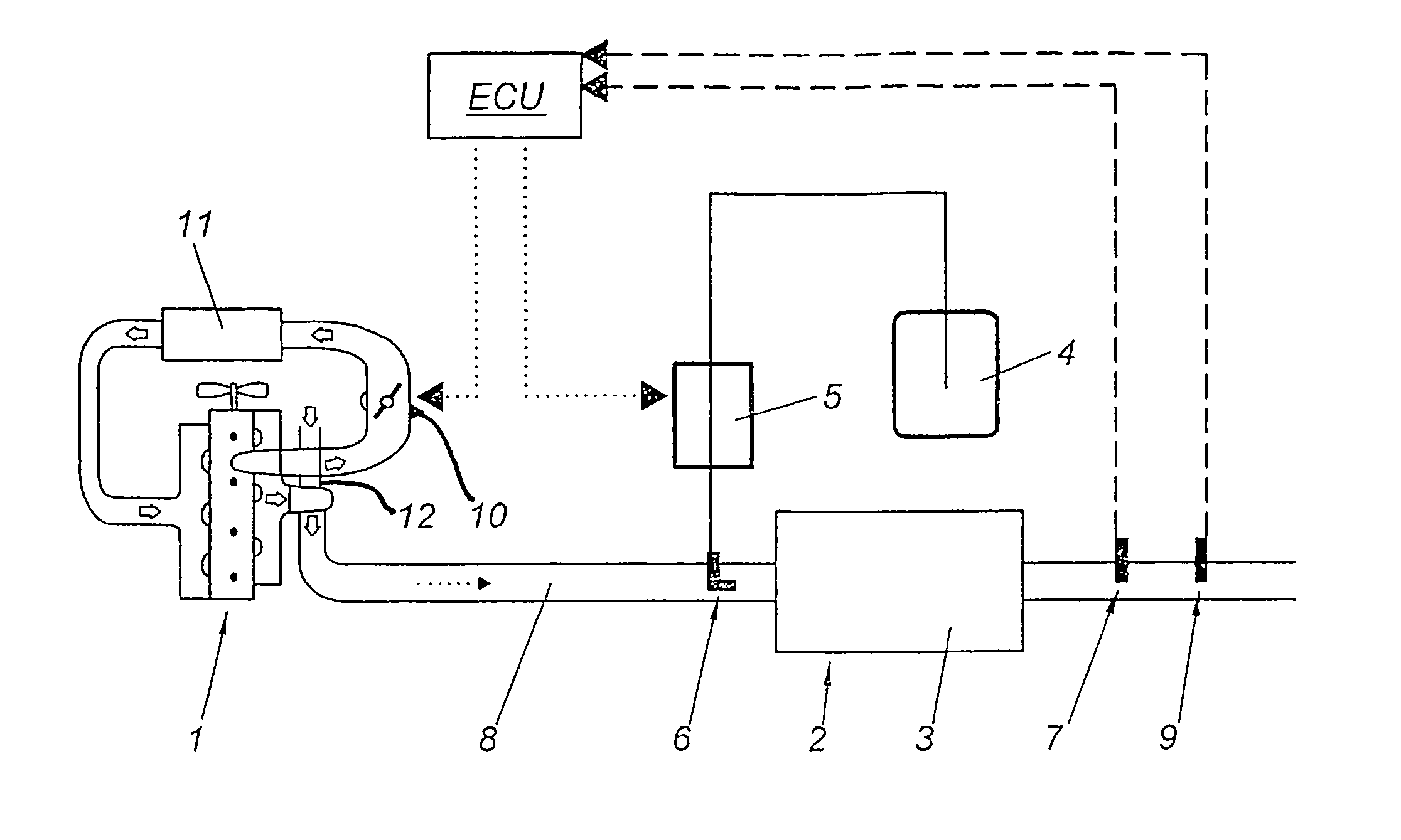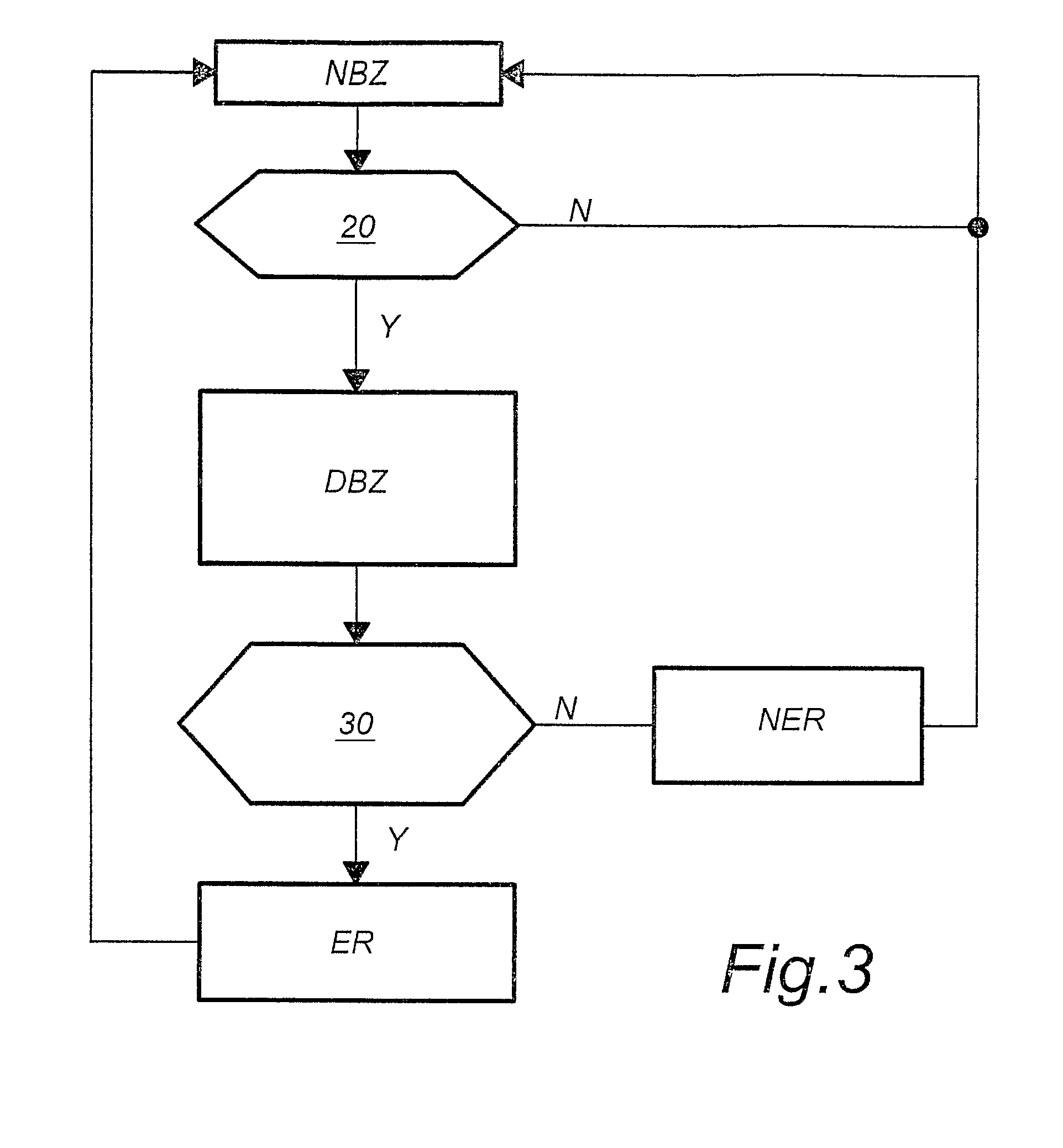Diagnosis method for an exhaust gas post-treatment system
a technology of exhaust gas treatment and diagnostic method, which is applied in the direction of electrical control, exhaust treatment electric control, separation process, etc., can solve the problems of insufficient nox sensor sensitivity, inability to diagnose malfunction, and large volume reduction, so as to increase the exhaust counter pressure, reduce the air/fuel ratio, and increase the charge exchange work
- Summary
- Abstract
- Description
- Claims
- Application Information
AI Technical Summary
Benefits of technology
Problems solved by technology
Method used
Image
Examples
Embodiment Construction
[0050]Functionally equivalent parts are indicated by the same reference numbers in all variants.
[0051]A first variant of the invention is shown in FIG. 1. The internal combustion engine 1 is equipped with an exhaust gas treatment device 2 consisting of an SCR catalytic converter 3, a tank 4 for a reducing agent, a metering device 5 for the reducing agent and an injection nozzle 6 for the reducing agent. The metering device 5 for the reducing agent is controlled by an electronic control unit ECU, which may be identical with the control unit of the internal combustion engine 1 or may be a separate control unit exchanging data with the control unit of the internal combustion engine 1. In the exhaust train there is located at least one temperature sensor 7 before or behind the SCR catalytic converter 3, which signals the temperature of the SCR catalytic converter 3 to the control unit ECU. A sensor 9 for measuring the concentration of nitrogen oxides (NOx) is also located in the exhaust...
PUM
 Login to View More
Login to View More Abstract
Description
Claims
Application Information
 Login to View More
Login to View More - R&D
- Intellectual Property
- Life Sciences
- Materials
- Tech Scout
- Unparalleled Data Quality
- Higher Quality Content
- 60% Fewer Hallucinations
Browse by: Latest US Patents, China's latest patents, Technical Efficacy Thesaurus, Application Domain, Technology Topic, Popular Technical Reports.
© 2025 PatSnap. All rights reserved.Legal|Privacy policy|Modern Slavery Act Transparency Statement|Sitemap|About US| Contact US: help@patsnap.com



